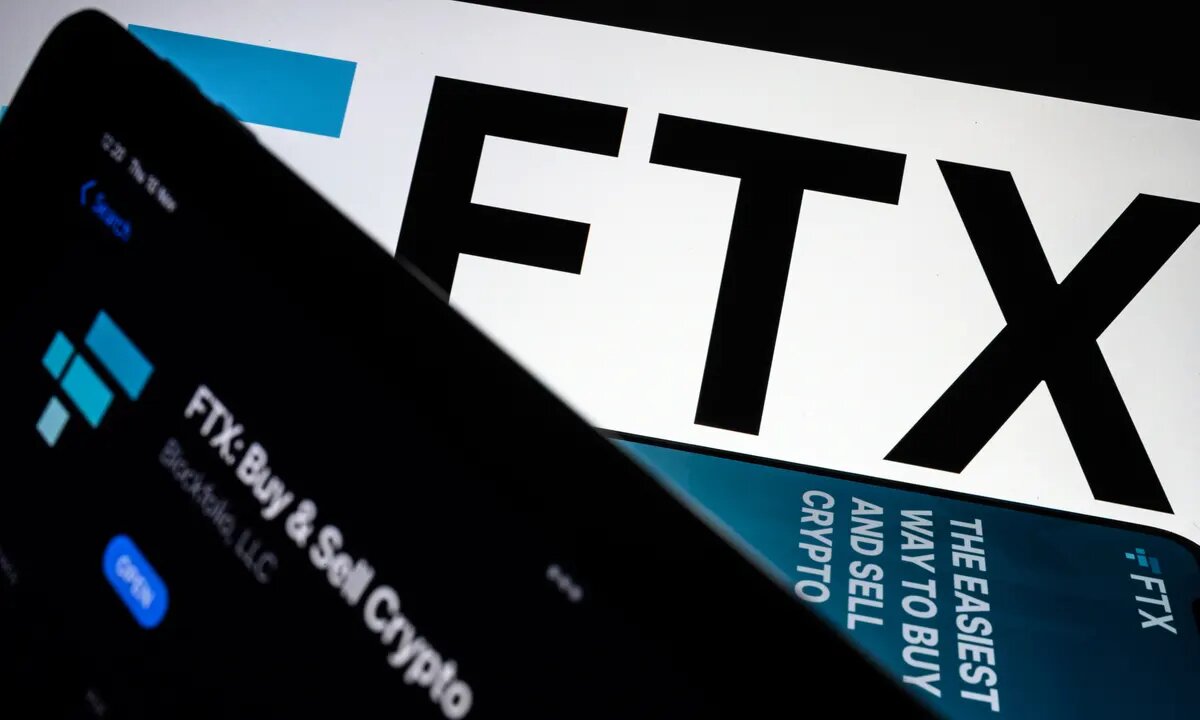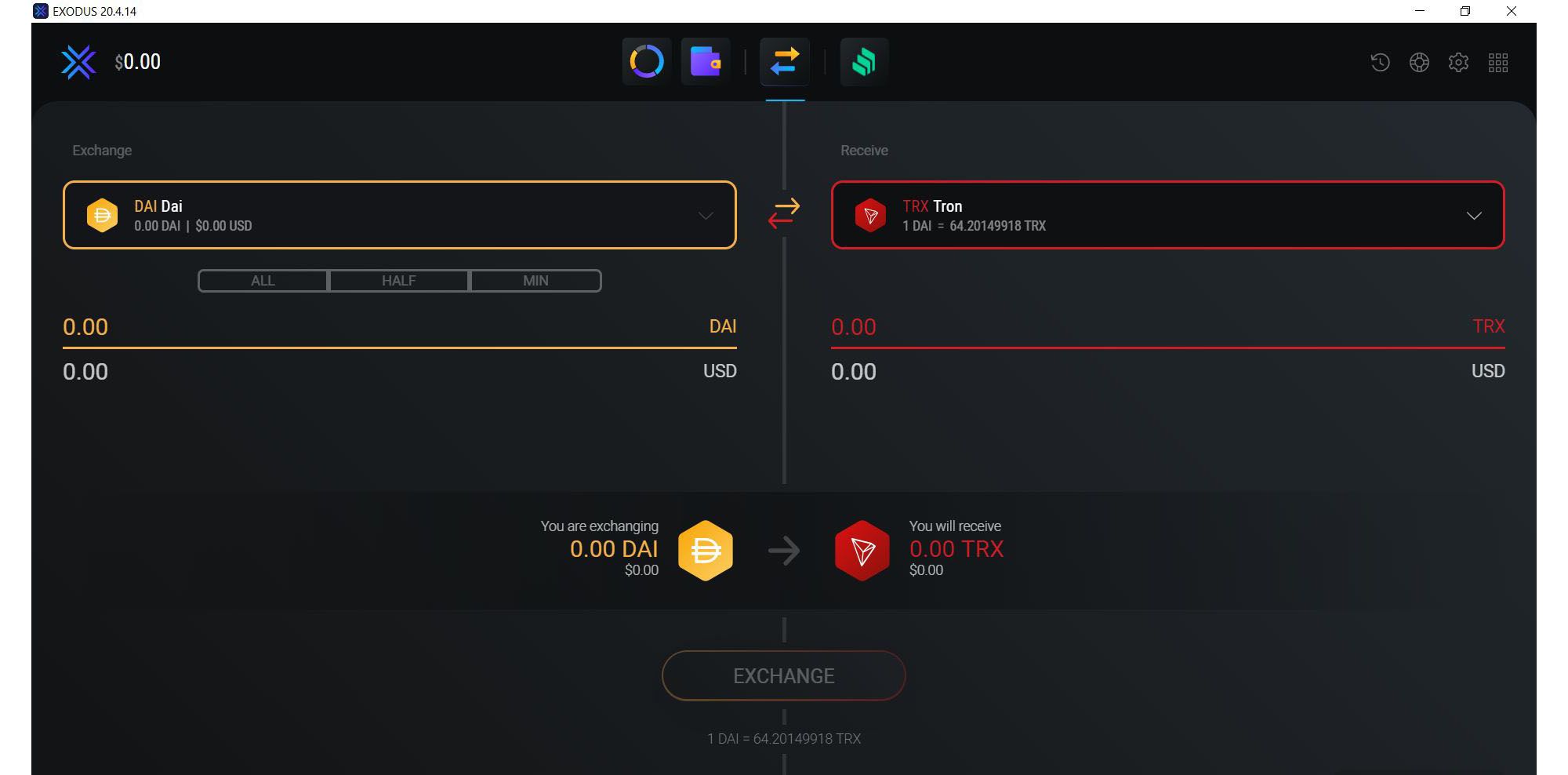Introduction
Cryptocurrency has gained significant popularity in recent years, with digital currencies like Bitcoin and Ethereum dominating headlines. As the adoption of cryptocurrencies grows, the need for secure and reliable platforms for buying, selling, and trading these digital assets becomes paramount. This is where crypto exchanges come into play.
Crypto exchanges serve as online platforms that allow individuals to trade cryptocurrencies for other digital assets or traditional fiat currencies. These exchanges play a crucial role in the cryptocurrency ecosystem, facilitating the smooth transfer of funds and ensuring liquidity in the market. Whether you are a seasoned trader or a newcomer to the world of cryptocurrencies, understanding how these exchanges work is essential.
In this article, we will delve into the concept of crypto exchanges, how they operate, the different types available, and the features and benefits they offer. We will also discuss the security measures implemented by these platforms and provide valuable tips for choosing the right exchange for your needs. By the end, you will have a comprehensive understanding of crypto exchanges, enabling you to navigate this exciting world of digital currencies with confidence.
What is a Crypto Exchange?
A crypto exchange, also known as a cryptocurrency exchange, is a digital marketplace where individuals can buy, sell, and trade various cryptocurrencies. Think of it as a virtual platform where buyers and sellers come together to exchange one form of digital currency for another or convert cryptocurrencies into traditional fiat currencies like USD, EUR, or GBP.
These exchanges serve as intermediaries, providing a secure and efficient way to trade cryptocurrencies. They act as the counterparties for trades, matching buyers with sellers and facilitating the transaction process. Similar to traditional stock exchanges, crypto exchanges provide a platform for trading different crypto assets at prevailing market prices.
A key feature of crypto exchanges is that they operate 24/7, allowing users to trade cryptocurrencies at any time, day or night. This global accessibility makes crypto exchanges a popular choice for traders worldwide, breaking down barriers and enabling participants from different regions to engage in the market.
It is important to note that crypto exchanges are not limited to trading cryptocurrencies. Many exchanges offer additional services such as wallet storage, margin trading, lending, and even staking opportunities. These platforms provide a one-stop solution for individuals looking to interact with cryptocurrencies beyond simple buying and selling.
To participate in a crypto exchange, users need to create an account and deposit funds, usually in the form of cryptocurrencies or fiat currencies. Once the account is set up and funded, users can explore the exchange’s trading functionalities to place buy or sell orders. When a trade is executed, the exchange ensures the secure transfer of assets from the seller to the buyer’s account.
Overall, crypto exchanges play a crucial role in the cryptocurrency ecosystem, providing a trusted platform for individuals to trade digital assets. They offer a convenient way to buy, sell, and store cryptocurrencies, empowering individuals to engage in the exciting world of digital currencies and participate in the global financial revolution.
How Does a Crypto Exchange Work?
A crypto exchange operates by connecting buyers and sellers who wish to trade cryptocurrencies. The exchange acts as an intermediary, ensuring smooth and secure transactions between participants. Here’s a step-by-step breakdown of how a typical crypto exchange works:
- User Registration: To get started, users need to create an account on the crypto exchange platform. This usually involves providing personal information, such as name, email address, and sometimes, KYC (Know Your Customer) verification.
- Depositing Funds: Once the account is set up, users can deposit funds into their exchange wallets. This can be done by transferring cryptocurrencies or fiat currencies to the provided wallet addresses. Users must ensure they’re using the correct wallet addresses and follow the deposit instructions provided by the exchange.
- Placing Orders: With funds in their exchange wallets, users can now explore the trading features of the platform. They can place different types of orders, such as market orders, limit orders, or stop orders. A market order allows users to buy or sell at the current market price, while a limit order allows setting a specific price at which they are willing to buy or sell.
- Order Matching: When a user places an order, the exchange matches it with the corresponding opposite order. For example, if a user places a buy order for a certain cryptocurrency at a specific price, the exchange will search for a sell order from another user at the same price or a lower price. Once a matching order is found, the trade is executed.
- Transaction Execution: After an order is matched, the exchange executes the transaction by transferring the appropriate digital assets from the seller’s wallet to the buyer’s wallet. This process is handled securely within the exchange’s infrastructure, ensuring the proper transfer of ownership.
- Withdrawals: Once the trade is completed, users have the option to withdraw their digital assets from the exchange to an external wallet. This allows users to have full control and ownership of their assets outside the exchange’s platform. Withdrawal processes may vary depending on the exchange and can involve additional security measures for verification.
It’s important to note that each crypto exchange may have its own specific features and processes. Some exchanges offer advanced trading tools, including charting capabilities and order book analysis, while others focus on simplicity and ease of use. Additionally, different exchanges may have varying fee structures, security protocols, and supported cryptocurrencies.
By understanding the workings of a crypto exchange, users can navigate the platform confidently, make informed trading decisions, and participate in the exciting world of cryptocurrency trading.
Types of Crypto Exchanges
Crypto exchanges come in various types, each offering different features and functionalities to cater to the diverse needs of traders and investors. Let’s explore the three main types of crypto exchanges: centralized exchanges, decentralized exchanges, and peer-to-peer exchanges.
1. Centralized Exchanges
Centralized exchanges, also known as traditional exchanges, are the most common type of crypto exchanges. These platforms are run by a central authority or company, acting as intermediaries between buyers and sellers.
Centralized exchanges hold users’ funds on their platforms, providing convenience and ease of trading. They typically offer a user-friendly interface, advanced trading features, and high liquidity due to a large number of traders using the platform. Centralized exchanges are regulated and operated in accordance with local laws, offering a certain level of security and protection for users.
However, the downside of centralized exchanges is that they can be susceptible to hacking or insider attacks. Users need to trust that the exchange will safeguard their funds and personal information. Additionally, centralized exchanges often require users to complete KYC verification processes before they can start trading.
2. Decentralized Exchanges
Decentralized exchanges (DEXs) operate on a peer-to-peer network, eliminating the need for a central authority. These exchanges leverage smart contracts and blockchain technology to enable direct peer-to-peer trading without the need for intermediate parties.
DEXs provide users with more control over their funds as they don’t require them to deposit their assets onto the exchange. Instead, users retain ownership of their funds in their personal wallets until a trade is executed. This enhances security and reduces the risk of hacking or theft associated with centralized exchanges.
However, decentralized exchanges generally have lower liquidity compared to centralized exchanges. They may also have a steeper learning curve and less intuitive user interfaces, which can be a barrier for less-experienced traders. Additionally, DEXs are often limited in terms of the number of supported cryptocurrencies and trading pairs.
3. Peer-to-Peer Exchanges
Peer-to-peer (P2P) exchanges facilitate direct trades between buyers and sellers without the involvement of a third-party exchange. These platforms connect individuals who want to buy and sell cryptocurrencies and enable them to negotiate and set their own prices.
P2P exchanges provide a high level of privacy, as users can communicate directly with one another and negotiate the terms of the trade. They often offer a wide range of payment options, enabling users to trade cryptocurrencies with traditional fiat currencies or even with other digital assets.
One of the challenges with P2P exchanges is the potential risk of dealing with untrustworthy individuals. Users need to be cautious and perform due diligence when engaging in P2P trades to avoid scams or fraudulent activities. Additionally, P2P exchanges may have lower liquidity compared to centralized exchanges, which can impact the speed and efficiency of trades.
Each type of crypto exchange has its distinct advantages and disadvantages, catering to different preferences and trading strategies. Understanding these types can help users choose the most suitable exchange that aligns with their needs and priorities.
Centralized Exchanges
Centralized exchanges are the most common and widely used type of crypto exchange. Operating as traditional exchanges, they are run by a central authority or company, acting as intermediaries between buyers and sellers in the cryptocurrency market. Centralized exchanges play a crucial role in facilitating the trading of cryptocurrencies and offer several key features and benefits.
One of the primary advantages of centralized exchanges is their user-friendly interface and intuitive trading experience. These platforms are designed to cater to traders of all experience levels, providing a range of tools and features to enhance trading efficiency. Centralized exchanges often offer advanced order types, such as market orders, limit orders, and stop orders, allowing users to execute trades based on their specific trading strategies.
Moreover, centralized exchanges generally have higher liquidity compared to other types of exchanges. Liquidity refers to the ease with which an asset can be bought or sold without causing significant price movements. Centralized exchanges attract a large number of traders, resulting in a deep order book and tight bid-ask spreads, ensuring that users can execute trades quickly and at fair prices.
Another advantage of centralized exchanges is that they often support a wide range of cryptocurrencies and trading pairs. This provides traders with ample opportunities to diversify their portfolios and tap into various markets. Additionally, centralized exchanges frequently list newly launched cryptocurrencies, offering investors the ability to participate in initial coin offerings (ICOs) and take advantage of early investment opportunities.
Centralized exchanges are also known for their regulatory compliance and security measures. In order to operate legally, these exchanges must adhere to relevant regulations and comply with Know Your Customer (KYC) and Anti-Money Laundering (AML) policies. This helps ensure a safer trading environment and reduces the risk of illicit activities.
However, centralized exchanges do have some drawbacks. As intermediaries, users must trust the exchange to hold and secure their funds. There have been instances of centralized exchanges being hacked or experiencing security breaches, resulting in the loss of user funds. It is critical for users to choose reputable exchanges with strong security protocols and to store their funds in secure wallets whenever possible.
Moreover, centralized exchanges sometimes require users to complete a KYC verification process before they can start trading. This can involve submitting personal identification documents, which may be seen as a privacy concern for some individuals. However, KYC measures are in place to prevent fraud, money laundering, and other illegal activities on these platforms.
In summary, centralized exchanges are the most popular type of crypto exchange, offering a wide range of trading features, high liquidity, and regulatory compliance. While they have their security considerations, choosing a reputable centralized exchange can provide users with a convenient and efficient way to trade cryptocurrencies and participate in the exciting world of digital assets.
Decentralized Exchanges
Decentralized exchanges (DEXs) are a type of crypto exchange that operates on a peer-to-peer network without the involvement of a central authority. Unlike centralized exchanges, DEXs leverage smart contracts and blockchain technology to facilitate direct trades between buyers and sellers. Decentralized exchanges offer unique features and benefits that appeal to users seeking enhanced security and control over their funds.
One of the primary advantages of decentralized exchanges is their emphasis on user control and ownership of funds. Instead of depositing funds onto the exchange, users retain control of their assets in their personal wallets until a trade is executed. This reduces the risk of hacking or theft associated with centralized exchanges, as funds are not held in a vulnerable central repository.
Another key advantage of decentralized exchanges is the enhanced privacy they provide. Users do not need to go through extensive KYC processes or disclose personal information to trade on DEXs. This anonymity can be appealing to individuals who prioritize their privacy and want to maintain control over their financial activities.
Decentralized exchanges also promote open access and permissionless trading. Since they operate on a peer-to-peer network, anyone with an internet connection and a compatible wallet can participate. This inclusivity allows individuals from all over the world to engage in cryptocurrency trading without facing geographical restrictions or regulatory barriers.
However, it is important to note that decentralized exchanges generally have lower liquidity compared to centralized exchanges. This is because liquidity relies on a critical mass of participants in the trading network. Nevertheless, various initiatives are being implemented to improve liquidity on decentralized exchanges, such as liquidity pools and tokenization solutions.
DEXs may also have a steeper learning curve compared to centralized exchanges. The user interfaces of decentralized exchanges tend to be less intuitive and may require users to be familiar with digital wallets and interact directly with smart contracts. However, as the technology evolves, user-friendly interfaces are being developed to enhance the usability of decentralized exchanges.
Furthermore, decentralized exchanges often offer a limited number of supported cryptocurrencies and trading pairs compared to their centralized counterparts. While this selection is gradually expanding, it is important for users to ensure that the assets they wish to trade are available on the specific decentralized exchange they choose to use.
In summary, decentralized exchanges offer enhanced security, privacy, and user control over funds. While they may have lower liquidity and a steeper learning curve compared to centralized exchanges, DEXs provide a trustless and permissionless trading experience for individuals who prioritize the underlying principles of blockchain technology.
Peer-to-Peer Exchanges
Peer-to-peer (P2P) exchanges are a type of crypto exchange that enables direct trading between buyers and sellers without the involvement of an intermediary. These platforms connect individuals who want to buy and sell cryptocurrencies, allowing them to negotiate and set their own prices. Peer-to-peer exchanges offer unique features and benefits that appeal to users seeking privacy, flexible payment options, and a decentralized trading experience.
One of the primary advantages of peer-to-peer exchanges is the high level of privacy they provide. P2P exchanges allow users to communicate directly with one another, negotiate the terms of the trade, and maintain control over their personal information. This privacy can be appealing to individuals who value anonymity and prefer to conduct transactions without disclosing personal details.
Moreover, P2P exchanges often offer a wide range of payment options. Since users trade directly with one another, they can choose their preferred payment method, including bank transfers, digital wallets, cash deposits, and even gift cards. This flexibility allows users to transact in ways that suit their needs and local regulations.
Additionally, P2P exchanges can provide users with competitive pricing. As buyers and sellers negotiate directly, they have more control over the prices at which they are willing to buy or sell cryptocurrencies. This can result in better rates compared to centralized exchanges that operate with fixed bid-ask spreads.
However, there are some considerations when using P2P exchanges. One challenge is the increased risk associated with dealing directly with other individuals. Users must exercise caution and perform due diligence when engaging in P2P trades to avoid scams or fraudulent activities. It is essential to thoroughly research and verify the reputation and trustworthiness of the counterparty before engaging in a transaction.
Another factor to consider is the potential for lower liquidity on P2P exchanges compared to centralized exchanges. The number of buyers and sellers may be limited, which could impact the speed and efficiency of trades. Nevertheless, P2P exchanges are continuously growing in popularity, with increasing adoption and liquidity.
Furthermore, the user experience on P2P exchanges may vary depending on the platform. Some P2P exchanges provide user-friendly interfaces and escrow services to safeguard both parties involved in the trade. Others may require users to take more initiative and responsibility in executing trades and ensuring the security of their transactions.
In summary, peer-to-peer exchanges offer privacy, flexible payment options, and the ability to negotiate prices directly with other users. While users must exercise caution and be aware of potential risks, P2P exchanges provide an alternative trading experience for individuals who value privacy, control, and the ability to transact in their preferred methods.
Features and Benefits of Crypto Exchanges
Crypto exchanges offer a range of features and benefits that make them the go-to platforms for buying, selling, and trading cryptocurrencies. Whether you are an experienced trader or a newcomer to the world of digital assets, understanding the features and benefits of crypto exchanges is essential. Let’s explore the key advantages these platforms bring to the table.
1. Convenience and Accessibility
Crypto exchanges provide a convenient and accessible way for individuals to enter the cryptocurrency market. Unlike traditional financial markets, which might have strict trading hours, crypto exchanges operate 24/7, allowing users to trade at any time, from anywhere in the world. This accessibility accommodates users in different time zones and offers flexibility to fit trading activities around personal schedules.
2. Wide Range of Cryptocurrencies
One of the major benefits of crypto exchanges is the vast selection of cryptocurrencies they support. Users can trade popular cryptocurrencies like Bitcoin (BTC), Ethereum (ETH), and Litecoin (LTC), as well as a myriad of altcoins and newly launched tokens. This wide variety of options allows traders to diversify their portfolios and explore new investment opportunities within the rapidly evolving crypto market.
3. Liquidity and Market Depth
Crypto exchanges, particularly centralized exchanges, offer high liquidity due to the large number of traders using these platforms. Liquidity ensures that trades can be executed quickly and at fair prices without significantly impacting the market. The deeper the liquidity, the easier it is to buy or sell cryptocurrencies without experiencing slippage or price fluctuations.
4. Advanced Trading Features
Crypto exchanges often provide advanced trading features and tools to enhance the trading experience. These features may include stop-loss orders, margin trading, limit orders, and real-time market data. Advanced charting tools enable technical analysis, aiding traders in making informed decisions based on price patterns and indicators.
5. Security Measures
Crypto exchanges prioritize the security of user funds and personal information. Reputable exchanges utilize industry-standard security protocols such as two-factor authentication (2FA), encryption, secure socket layers (SSL), and cold storage for funds. These security measures, coupled with ongoing monitoring and audits, help safeguard users’ assets and reduce the risk of hacking or theft.
6. Additional Services
Many crypto exchanges offer additional services beyond trading, adding value to their platforms. These services may include cryptocurrency wallets, lending platforms, staking and rewards programs, and support for initial coin offerings (ICOs). Users can take advantage of these services to further engage with the crypto ecosystem and maximize their involvement in the digital economy.
In summary, crypto exchanges provide convenience, accessibility, a wide range of cryptocurrencies, liquidity, advanced trading features, robust security measures, and additional services. These features and benefits make crypto exchanges indispensable tools for individuals seeking to buy, sell, and trade cryptocurrencies, enabling them to participate in the dynamic world of digital assets with confidence and ease.
Security Measures on Crypto Exchanges
Security is a top priority for crypto exchanges, as they handle significant amounts of assets and user data. To protect against hacking attempts, fraud, and theft, exchanges implement various security measures. These measures aim to ensure the safety of user funds and maintain the integrity of the platform. Here are some of the key security features and practices commonly employed by crypto exchanges:
1. Two-Factor Authentication (2FA)
Two-Factor Authentication is a widely used security measure that adds an extra layer of protection to user accounts. Typically, it involves linking an authentication app (such as Google Authenticator or Authy) to the user’s account. When logging in, the user is required to provide not only their username and password but also a temporary code generated by the authentication app. This ensures that even if someone obtains the login credentials, they will be unable to access the account without the additional code.
2. Cold Storage of Funds
Crypto exchanges often store a significant portion of user funds in cold wallets, which are not connected to the internet. These cold wallets provide an extra layer of protection against online attacks since they are not susceptible to hacking attempts. By keeping the majority of funds offline, exchanges minimize the risk of losing user assets to cybercriminals.
3. Encryption and Secure Socket Layers (SSL)
Encryption is a crucial security measure used by exchanges to protect user data. By encrypting sensitive information, such as passwords and personal details, exchanges ensure that even if the data is intercepted, it remains unreadable. Secure Socket Layers (SSL) provide an additional layer of security by encrypting data transmitted between the user’s browser and the exchange’s servers. This protects against man-in-the-middle attacks and unauthorized access to user data.
4. Regular Security Audits and Penetration Testing
Reputable crypto exchanges often conduct regular security audits and perform penetration testing to identify vulnerabilities in their systems. External auditors assess the exchange’s infrastructure, code, and security practices to ensure compliance with industry standards. Penetration testing involves ethical hacking attempts to uncover weaknesses in the system and patch them before malicious actors can exploit them.
5. Account Activity Monitoring
Exchanges employ sophisticated monitoring systems to detect any suspicious account activity. This includes monitoring login attempts, fund withdrawals, and changes to account settings. Unusual activity triggers alerts, allowing exchanges to respond swiftly to potential security breaches. Account activity monitoring helps protect user accounts from unauthorized access and ensures that exchanges can identify and address any security threats promptly.
6. Regulatory Compliance and KYC
To prevent money laundering and fraud, crypto exchanges often implement Know Your Customer (KYC) procedures. These require users to provide identification documents, such as passports or government-issued IDs, and proof of address. By verifying user identities, exchanges can mitigate the risk of illicit activities on their platforms and comply with regulatory requirements.
While these security measures significantly enhance the safety of crypto exchanges, users must also take responsibility for their own security. This includes using strong and unique passwords, regularly updating software and applications, enabling 2FA wherever possible, and being vigilant against phishing attempts.
In summary, crypto exchanges implement security measures such as two-factor authentication, cold storage of funds, encryption and SSL, regular security audits, account activity monitoring, and regulatory compliance. By combining these measures with user awareness and best security practices, exchanges aim to provide a secure environment for users to transact and trade cryptocurrencies confidently.
What to Consider when Choosing a Crypto Exchange
Choosing the right crypto exchange is crucial for a positive trading experience and the security of your assets. With numerous exchanges available, it is important to consider several factors before making a decision. Here are some key factors to consider when choosing a crypto exchange:
1. Security
Security should be a top priority when choosing a crypto exchange. Look for exchanges that employ robust security measures such as strong encryption, two-factor authentication (2FA), and cold storage of funds. Additionally, check if the exchange has a history of security breaches and how they handle account security and recovery in case of any issues.
2. Regulation and Compliance
Consider whether the exchange operates in a regulated environment and adheres to appropriate regulatory requirements. Exchanges that follow Know Your Customer (KYC) and Anti-Money Laundering (AML) procedures can provide an added layer of protection and help prevent illicit activities on their platforms. Regulatory compliance enhances the legitimacy and credibility of the exchange.
3. Available Cryptocurrencies
Check the range of cryptocurrencies offered by the exchange. Ensure that the exchange supports the specific cryptocurrencies you want to trade. Some exchanges may have a limited selection, while others may offer a wide variety of digital assets. Additionally, consider whether the exchange regularly adds new cryptocurrencies to its platform to stay up to date with market trends.
4. Liquidity
Consider the liquidity of the exchange and the trading pairs it offers. Higher liquidity allows for faster execution of trades and tighter bid-ask spreads. Exchanges with higher volume and market depth can ensure you have access to a liquid market and avoid price slippage during trades. Look for exchanges that have a large number of active users and significant trading volumes.
5. Fees and Exchange Rates
Take into account the fees charged by the exchange for trading, deposits, and withdrawals. Different exchanges have varying fee structures, and these costs can significantly affect your trading profitability. Additionally, pay attention to the exchange rates offered by the platform and compare them with other exchanges to get the best value for your trades.
6. User Experience and Interface
Consider the user experience and interface of the exchange. A user-friendly platform with intuitive navigation and clear trading features can enhance your trading experience. Look for exchanges that provide charting tools, order types, and real-time market data to assist in making informed trading decisions.
7. Customer Support
Customer support is an essential aspect to consider when choosing a crypto exchange. Check if the exchange offers responsive and helpful customer support channels, such as email, live chat, or phone support. Prompt and efficient customer support can be crucial, especially in resolving any issues or concerns that may arise during your trading journey.
By considering these factors, you can make an informed decision when choosing a crypto exchange that meets your specific trading needs, ensuring a secure, reliable, and convenient trading experience.
Conclusion
Crypto exchanges play a fundamental role in the world of cryptocurrencies, providing a platform for users to buy, sell, and trade digital assets. Whether you are a seasoned trader or a newcomer to the crypto market, understanding the different types of exchanges, their features, and the factors to consider when choosing one is essential for a safe and successful trading experience.
Centralized exchanges offer convenience, high liquidity, and a user-friendly interface, making them a popular choice for many traders. However, users must trust these exchanges to securely hold their funds. On the other hand, decentralized exchanges prioritize user control, privacy, and security, eliminating the need for intermediaries. Peer-to-peer exchanges offer flexibility in payment options and promote direct trading between individuals.
When selecting a crypto exchange, it is crucial to prioritize security measures such as two-factor authentication, cold storage of funds, and strong encryption. Additionally, consider factors like regulation and compliance, the range of available cryptocurrencies, liquidity, fees and exchange rates, user experience, and customer support.
Remember to exercise caution when trading on any platform and take responsibility for your own security. Keep your funds in secure wallets when possible, use strong passwords, and remain vigilant against phishing attempts and fraudulent activities.
In conclusion, crypto exchanges are not only gateways to the world of cryptocurrencies but also platforms that empower individuals to participate in the global financial revolution. By understanding how they work, the different types available, and the features they offer, users can make informed decisions, navigate the crypto market with confidence, and harness the potential that digital assets present.

























